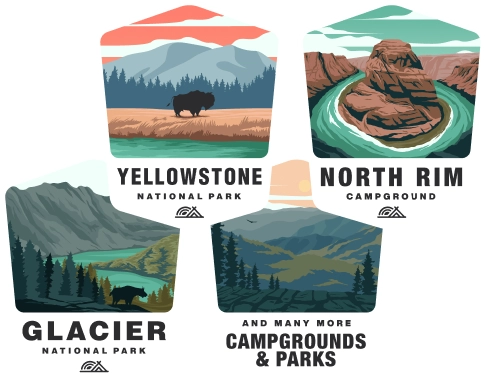Camping at Fish Creek State Park
Overview
Fish Creek State Park is not a standalone state park, but rather a natural area that is part of the Sierra National Forest. When camping in the Sierra National Forest, and specifically near Fish Creek, it's important to recognize that the natural environment is both a refuge for wildlife and a place for outdoor recreation. Thus, understanding the regulations, the environment, and the necessary precautions is key to a safe and enjoyable visit.
Camping Regulations
Permits:
- Depending on the specific area, you may need a wilderness permit for overnight stays in the backcountry. For most parts of the Sierra National Forest, these are required and can be obtained from the forest service.
Campfires:
- Campfires may be permitted in designated areas, but often require a California Campfire Permit. Always check current fire regulations before starting a fire, as restrictions change based on conditions.
Food Storage:
- Proper food storage is essential to keep wildlife, particularly bears, away from your camp. Use bear-proof containers or storage lockers where provided.
Environmental Protection
Leave No Trace:
- Follow Leave No Trace principles to minimize your impact on the environment. Pack out all trash, stay on designated trails, and camp on durable surfaces.
Sensitive Habitats:
- Fish Creek and its surrounding areas may contain sensitive habitats. Follow any posted signs or guidance protecting these areas.
Safety Tips
Weather:
- Sierra National Forest can experience rapid weather changes. Be prepared for varying conditions including rain, cold, and the potential for snow at higher elevations, even in summer.
Wildlife:
- Maintain a safe distance from wildlife and never feed animals. Be bear aware and know what to do in an encounter.
Water Safety:
- Treat or boil water from streams or lakes before drinking to avoid water-borne illnesses. Be cautious around swift-moving water, especially in spring and early summer when flows are high.
Amenities and Activities
Facilities:
- Depending on the location, facilities may range from fully serviced campgrounds with restrooms and running water to primitive backcountry sites without services.
Recreation:
- Popular activities in the area include hiking, fishing, horseback riding, and mountain biking. Certain times of the year may also allow for hunting and snow-related sports, like cross-country skiing.
Reservations and Access
Accessing the Park:
- Access may depend on seasonal road closures, especially after winter snowfall. Always check the current access status and road conditions.
Booking a Site:
- For developed campgrounds, reservations may be required and can typically be made through recreation.gov. Dispersed camping is usually on a first-come, first-served basis.
Preparing for Your Trip
Equipment:
- Ensure you have the right gear for the expected conditions, such as a suitable tent, sleeping bag, and clothing layers.
Local Information:
- Before heading out, check with the local Forest Service office or the official Sierra National Forest website for updated information regarding conditions, permits, and safety recommendations.
Contact Details:
- For the most accurate and current information about camping at Fish Creek within Sierra National Forest, contact the forest service directly.
Emergency Preparedness:
- Always let someone know your itinerary and expected return time. Carry a map, compass, and consider a GPS device, as cellular service may be unreliable.
Conclusion
Camping in and around Fish Creek in the Sierra National Forest is an experience that offers stunning natural beauty for visitors. However, it is crucial to plan, respect the environment, and be prepared for backcountry conditions to ensure a safe and memorable trip.
